Every year on August 1st, the Andean communities of South America gather to commemorate one of their most ancient and revered traditions: Pachamama Raymi, or Mother Earth Day. This celebration is deeply rooted in the Andean people's cultural and spiritual heritage, expressing their profound respect and gratitude to Pachamama, the deity who represents Mother Earth. The festival crosses geographical boundaries, bringing together Peru, Bolivia, Ecuador, Colombia, Chile, and Argentina in a collective act of reverence and Thanksgiving.
The significance of this day goes far beyond a simple cultural observance. It represents an opportunity for Andean communities to pause and appreciate the natural world that sustains them. They express their gratitude for good weather, abundant harvests, healthy livestock, and overall prosperity through elaborate rituals and offerings. This celebration also serves as a reminder of the fundamental principle of reciprocity that underpins the Andean worldview: humans must give back to the Earth in exchange for the bounty they receive.
In today's world, where environmental concerns are more pressing than ever, Pachamama Raymi's message reaches a wider audience. It emphasizes the timeless value of coexisting with nature and acknowledging the interconnectedness of all life. By delving into the rich history and vibrant practices associated with this celebration, we can learn about how ancient traditions continue to provide wisdom and guidance for modern ecological stewardship.
Pachamama Raymi, Mother Earth Day, is a celebration of abundance and fertility
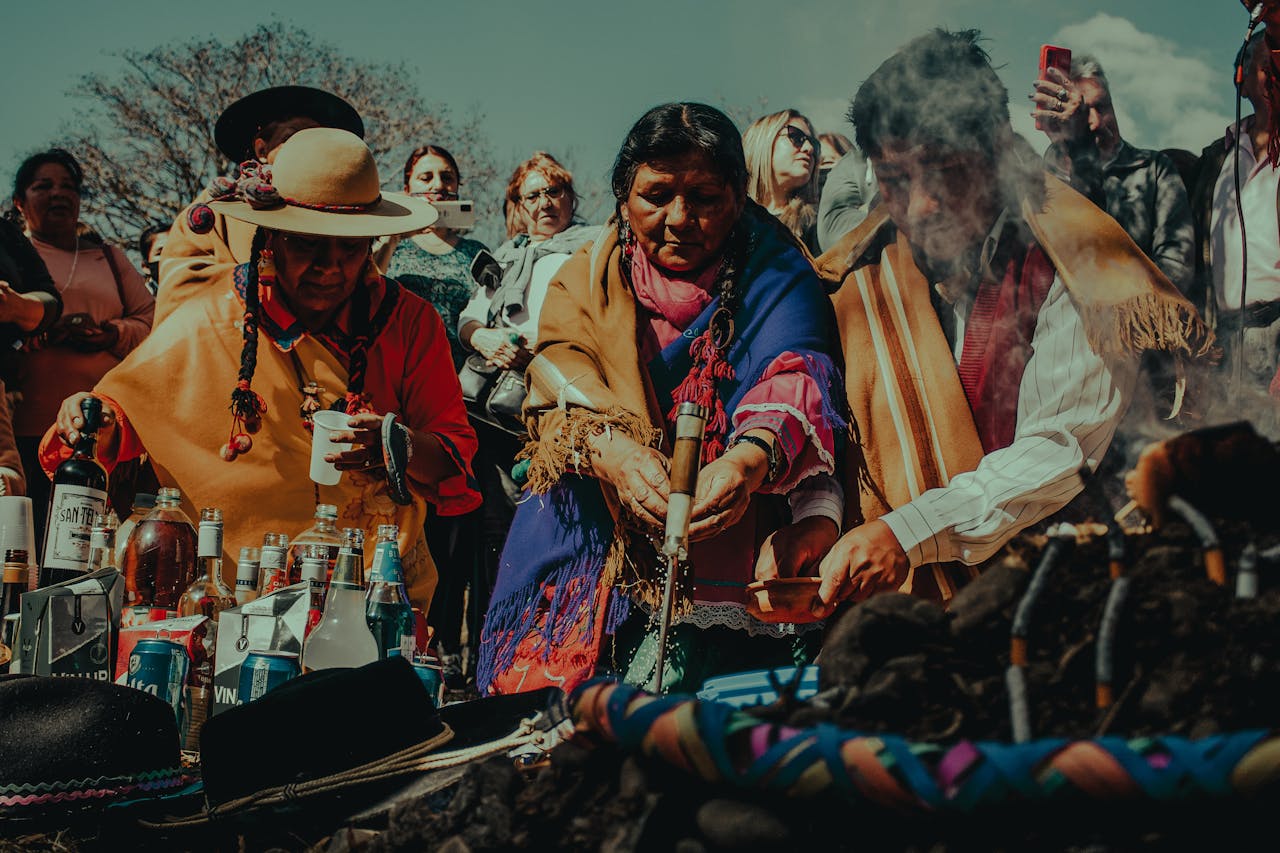
History and Significance of Pachamama Raymi
Pre-Hispanic origins
Pachamama has been venerated since pre-Hispanic times. Pachamama was considered the Inca Empire's protective deity, in charge of nurturing and preserving human well-being. Pachamama, like the Sun God (Inti) and the Apus (sacred mountains), held a central place in Andean culture. These deities were critical to the balance and prosperity of Inca society, which relied heavily on agriculture for its economy and daily life.
Meaning of Pachamama
"Pachamama" is derived from Quechua, where "pacha" means space, time, universe, or world, and "mama" means mother. Thus, Pachamama literally translates as "Mother Earth," but its meaning is much broader. It represents all of space and time, as well as the maternal embrace that sustains life. Pachamama is the fertility goddess in Inca mythology, responsible for planting, harvesting, creating mountains and earthquakes, as well as the very existence of life on Earth.
Feast of Pachamama
Pachamama Raymi, which means "Feast of Mother Earth," is celebrated with great devotion in the Andes, particularly in Cusco, Peru. During the first week of August, communities honor Mother Earth as a token of gratitude for the blessings bestowed upon their crops, which feed their families throughout the year. This act of veneration exemplifies reciprocity, a core principle of the Andean worldview that seeks to maintain harmony between humans and nature.
Central Ritual of August
Preparations and Ceremony
August 1st is the main day of the celebration. Farmers refrain from working the land on this day to allow it to rest and to begin the offering ritual known as "haywasqa." This ritual consists of offering cooked foods grown on the land, as well as coca leaves, huairuro seeds, chicha de jora, and other beverages. These offerings are buried in a hole to symbolize feeding Mother Earth.
Role of the Pako
The ritual is led by an Andean priest known as "Pako." The Pako arranges the offerings on a multicolored cloth, reciting Quechua prayers and chants. According to the Andean worldview, Pachamama is hungry and thirsty at this time, so it is critical to make these offerings to ensure her well-being and, as a result, the prosperity of the crops and community.
Elements of the Offering
The offering ritual incorporates a wide range of elements, each with a unique significance:
- Cooked foods represent respect and gratitude for the fruits of the land.
- Coca leaves are considered sacred and essential in Andean rituals.
- Huairuro Seeds: They represent prosperity and the continuation of life.
- Chicha de Jora: A traditional fermented beverage that represents celebration and unity.
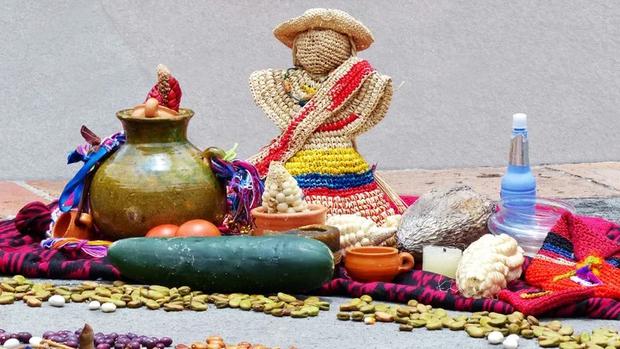
Festive Activities
Bullfighting and Textile Exhibitions
In addition to the offering ritual, the festival features cultural events like bullfighting and textile exhibitions. These activities not only educate national and international tourists about Inca culture, but they also preserve the tradition and connection with Pachamama.
Music & Dance
Music and dance are also important parts of the celebration. The villagers express their gratitude to the land through song, and dancers perform traditional Cusco dances, reinforcing a sense of community and belonging.
How Is Pachamama Day Celebrated?
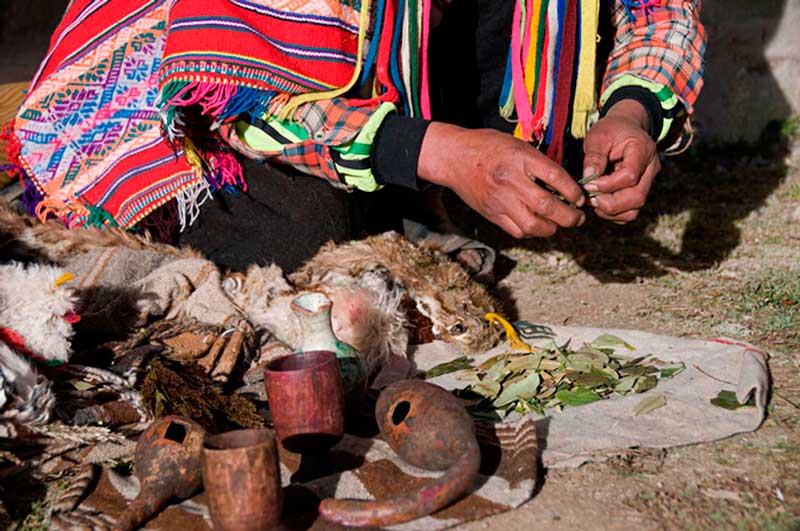
Ancestral rituals
Pachamama Day brings communities together to perform a series of rituals passed down from generation to generation. The ritual is based on the principle of reciprocity, which is central to the Andean worldview. According to this principle, people must return to Mother Earth everything she has given them throughout the year in order to maintain the balance between humans and nature.
Ritual Procedure
The main rite consists of digging a hole in the ground to represent Pachamama's mouth and filling it with food, fruits, seeds, peanuts, coca leaves, medicinal plants, fermented beverages, and even crafts. Before digging the hole, the community leaders, who are usually the oldest members, seek permission from their forefathers and the energies of the land. The offerings are then buried, and a mound of stones and flowers is built on top of the earth to serve as the ceremonial center.
Gratitude and Requests
Following the ritual, the community thanks Mother Earth for the good weather, animals, and crops. They also ask for protection and prosperity for the coming year. This act of gratitude and request exemplifies Andean culture's strong connection to nature.
What is Pachamama?
Origins and Meaning.
Pachamama is a fertility goddess revered in Inca mythology. In Quechua, "pacha" refers to space, time, the universe, or the world, while "mama" means mother. Pachamama is in charge of planting, harvesting, the formation of mountains and earthquakes, and the continuation of life on Earth. She is regarded as the creator of Quechua mythology's four cosmological principles: earth, water, moon (embodied by the goddess Mama Killa), and sun (embodied by the god Inti).
Representation and Worship
She is frequently shown as an adult woman surrounded by nature. Pachamama is regarded as a powerful being to be respected and revered. Offerings and cults dedicated to her are essential for ensuring the fertility of the land and abundance in harvests.
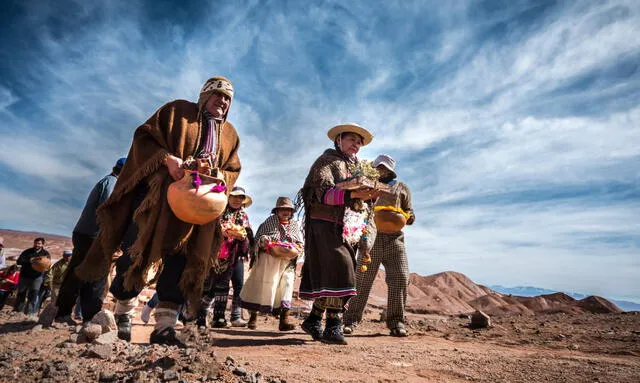
Celebrations in the Andean Region
Diversity of Rituals
Pachamama Day is celebrated in Colombia, Ecuador, Peru, Bolivia, Chile, and Argentina. Although each town has tailored the rituals to their own traditions, they all share the principle of reciprocity and the desire to thank Mother Earth. In some areas, the celebration lasts all month of August, coinciding with the start of the agricultural season in the southern hemisphere.
Rituals for Different Times
In addition to August 1st, rituals to Mother Earth are observed at other significant times, such as when purchasing a home or sending a family member on a trip. These rituals emphasize the importance of Pachamama in daily life, as well as the need to stay connected to nature.
Importance of Pachamama in Andean Culture
Source of life and prosperity
Pachamama is important to Andean communities because she represents the source of life, food, and wellness. The rituals held in her honor are intended to ensure the fertility of the land and abundance in harvests. This ancestral bond emphasizes the value of nature in daily life, as well as environmental stewardship.
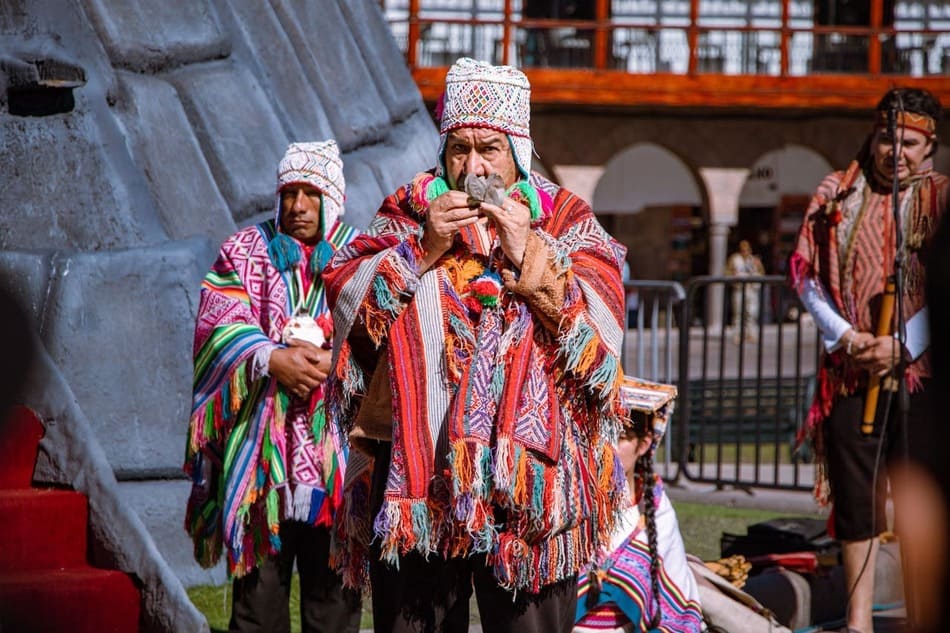
A lesson for the world
In an age when environmental issues are becoming increasingly pressing, the tradition of venerating Pachamama reminds us of the importance of maintaining a balance between humans and nature. This mutual respect can serve as an example for all cultures around the world, advocating for a more harmonious relationship with the environment.
Pachamama Day is a celebration that crosses generations and borders, bringing together Andean communities in a show of gratitude and respect for Mother Earth. This celebration not only preserves a rich cultural heritage, but it also teaches a powerful lesson about the value of reciprocity and respect for nature. In a global context of increasing environmental challenges, the example of Andean peoples can inspire communities around the world to value and protect our planet with equal zeal and dedication.
Ready to embark on your Peruvian adventure? Book your trip now and start the adventure of a lifetime.
Thank you for reading!
Please, follow us on Facebook and Instagram, click on the following icons: ![]()
![]()
![]()
And If you liked the article, you are very welcome to share it on your social media.
